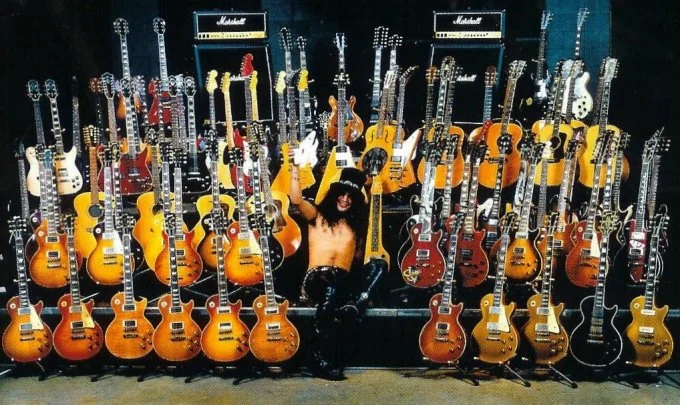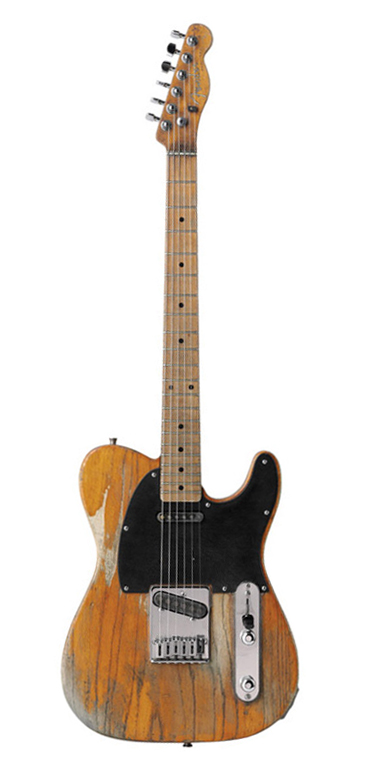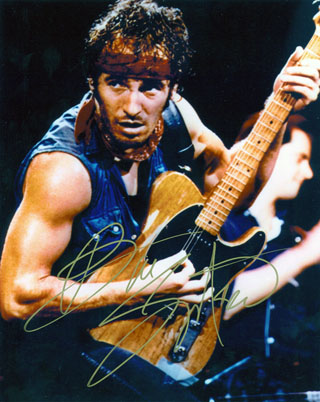Claescaster
Month: February, 2013
February 27, 2013
Electric guitar tonewoods
If you want to know what the tonal qualities are in different woods, what’s the best body wood for your next guitar building project, or maybe you are just curious to figure out what your guitar is made of. Then check out Alan Ratcliffe’s wood guide. I think my favourite is still Swamp Ash, probably just because the name sounds so awesome. I’m planning to build a new Claescaster soon, from scratch this time, and therefore I’m researching different suppliers of “licensed” Fender replacement parts, Warmoth, All parts, Musikraft, WD, Mighty Mite etc. It seems like US eBay is the best option for bodies, but then you might get hit with unnecessary import taxes and the shipping to Europe is quite high. I found this quite cheap UK seller but they only sell unfinished bodies and I would prefer to have it finished. I’m not sure if I trust this Hong Kong seller but that would be the cheapest option without any doubt, 107€ including shipping. The search continues…
February 25, 2013
500€ Guitars
Sometimes I wish I was stinking rich so I could buy all the guitars in the world. Then I realise that my life would probably not be that much better just because I had a million guitars. I wouldn’t have time to play them all and after a while I guess nothing really impress you. If you have a couple of Jimi Hendrix Strats in your collection then the Strats that you have that didn’t use to belong to Hendrix would probably feel pretty boring in comparison. I don’t have any really expensive guitars in my collection. Mainly because I’m not rich enough to buy a 1952 Telecaster, a 1964 L Series Strat or a 1958 Sunburst Les Paul, but also because it would be pretty pointless. When would you actually take out an instrument and play it if it was worth ten thousands of Euros? You would be so scared that something happened to it that you just kept it in a vault, like John Entwistle did. Guitars are meant to be played, and adored, but mainly played. I prefer to have guitars that I can use, bring to gigs and rehearse with, as well as hang on the wall and adore at home. Therefore I think guitars for around 500€ are ideal, at least for me. If you know what you are doing you can still get amazing Japanese guitars for 500€, especially on eBay. Expensive enough for having descent quality but cheap enough to replace if something happened to them so you really dare to use them.
 A nice example of a guitar worth around 500€, well maybe more like 600-700€. Greco Les Paul Custom EG-600C, Made in Japan, FujiGen 1980
A nice example of a guitar worth around 500€, well maybe more like 600-700€. Greco Les Paul Custom EG-600C, Made in Japan, FujiGen 1980
 A small part of Slash’s guitar collection
A small part of Slash’s guitar collection
February 15, 2013
Guitar of the day
Eric Clapton’s “Blackie” 1956/1957, a composite of 3 different Fender Stratocasters. Sold for $959,500 at a Christie’s auction.

February 15, 2013
Set neck or bolt on
A lot of people I have met over my 20 years of playing guitar have told me how horrible bolt on guitars are. This is the general opinion amongst guitar players and it can easily be seen in the second hand value of old Les Paul or SG copies for an example. “Oh it has a bolt on neck, well then I’m not interested.” I think it’s important to remember a few things. Most guitars were bolt on in the beginning, especially Japanese guitars up until 1973-74. It seems like it was only Gibson and the American makers that knew how to make set necks or maybe it was just too expensive to copy for brands in Europe and Asia. If you look at all the amazing German guitars from the Sixties like Hohner, Höfner or Italians like Eko, or even Swedish like Hagström, they will most likely be bolt on up until the early 70’s. My Hagström HIIN OT that was made in Sweden in 1975 has a bolt on neck, this was standard for a lot of brands back then. This was not a cheaply made instrument and back in the day it was good enough for both Frank Zappa and Jimi Hendrix. It’s an amazing guitar and I doubt it would be any better if it had a different neck joint. With a set neck I think they would have had to make both body and neck thicker, which would be hard for Hagström to sell since they were known for having the fastest necks in the world. A combination of thin necks, special H truss rods and amazing Swedish wood was their selling point when they broke in to the American market in the late Sixties. I don’t think that Frank Zappa thought his Hagström guitars were useless just because they had a bolt on neck.

For me the quality of the guitar in general and what type of wood is being used is way more interesting than if the neck is screwed on or glued. There is a lot of discussions whether set necks has greater sustain or not and again, it’s probably more down to the wood than which type of neck joint the guitar has. I guess there could be a slight difference in sound depending on how the neck is joined together, at least if you are going to believe this Guitar Player article. Then again, it’s not really fair to compare a Gibson guitar with a Fender guitar. I think pickups, body shape and wood has more to do with why a Telecaster and a Les Paul sounds differently, not the fact that the necks are joined differently. It would make more sense to compare two Japanese Les Paul copies of equal age and quality, one with a set neck and one with a bolt on. I doubt that you could hear the difference.
If we are going to trust the old, set necks has more sustain, then all Fender instruments should have less sustain. I would have to say that I disagree since I have played and heard Stratocasters with amazing sustain. Again, I believe that the quality of the wood is causing the sustain, not the glue or screws. The most important part, as always, is to play what you like and don’t care what other people say. I’m 100% sure that a Japan made Les Paul copy from the 1970’s with bolt on neck that cost ¥50 000 back then sounds better than any modern far east made copy with a set neck. It’s all about the quality of the instrument, not how the neck is joined to the body.
 My bolt on Westone Les Paul copy from the 1970’s made by Matsumoku in Japan.
My bolt on Westone Les Paul copy from the 1970’s made by Matsumoku in Japan.
February 13, 2013
Guitar of the day

George Harrison’s 1968 rosewood Fender Telecaster










